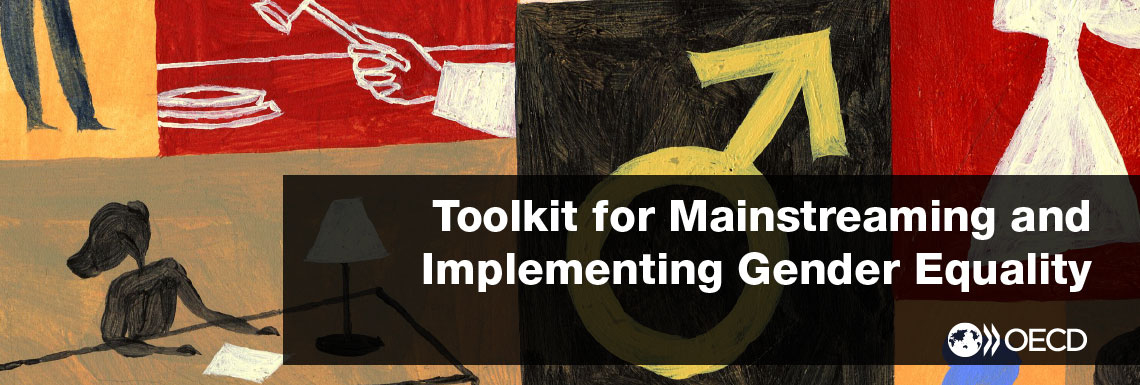Ex ante gender budgeting: gender assessments inform resource allocation decisions and the preparation of the government’s budget
SELF-ASSESSMENT QUESTION
Is the government using tools (such as a gender budget baseline analysis, gender needs assessments and gender impact assessments) in order to ensure that information on gender needs and the gender impact of different policies informs resource allocation decisions and the preparation of the government’s budget proposal?
WHY IS IT IMPORTANT?
During the ex ante phase of the budget process, the government prepares its tax and spending plans. Identifying gender-related needs in different policy areas as well as the gender-specific impact of policies allows the government to target resources more effectively to promote gender equality and ensure that policies do not negatively affect equality.
ACTIONS TO CONSIDER
- Conduct a gender budget baseline analysis: This analysis is conducted in advance of the budget formulation process to assess how the baseline allocation of government expenditures and revenues impacts gender equality. Information from this analysis can be used to help guide further resource allocation decisions and ensure that the draft budget proposal addresses gender equality gaps where they exist. Such an analysis is usually conducted by the central budget authority (or under its authority).
- Undertake gender needs assessments across different policy areas: Gender needs assessments are qualitative assessments which look in detail at the extent to which existing government policies and programmes meet and affect gender equality needs in a specific policy area. They should also identify priorities for policy action in the budgetary context. In addition to considering gender-disaggregated data available in each policy area, the assessment should take into account views and opinions from key stakeholders including policy practitioners, civil society organisations (particularly those in the field of gender equality) and citizens. These may be conducted at line ministry, policy or programme level, or on a government-wide basis by a suitably-mandated agency.
- Conduct ex ante impact assessments which identify the effect of proposed policy initiatives on gender equality: Ex ante impact assessments consider the impact of individual policy measures on gender equality. Information from this type of impact assessment helps inform budget managers on whether or not the policy measure is appropriate for inclusion in the budget proposal. The gender aspect of the impact assessment may be undertaken individually or as part of the existing policy impact analysis framework. The successful implementation of gender impact assessments is technical and challenging but conducting them within an appropriate systematic framework can underpin the capacity of governments to ensure that policies are efficient and effective in reducing gender inequalities. These are usually conducted by suitably-qualified staff in individual line ministries.
PITFALLS TO AVOID
- Budget managers do not have the expertise or resources to undertake meaningful gender assessments.
- Gender assessments are not consistently applied across government departments.
- Assuming that the “default” allocation of resources is gender-neutral.
- Ex ante gender assessments becoming a ‘tick box’ exercise.
COUNTRY EXAMPLES
Canada
The Government of Canada has been using an enhanced form of gender-based analysis known as GBA+ in the development of policies, programmes and legislation since 1995. GBA+ is an analytical tool used to assess the potential impacts of policies, programmes, services, and other initiatives on diverse groups of women and men, taking into account gender and other identity factors. It is used by analysts, researchers, policymakers, and service providers across all sectors to guide the systematic consideration of gender and other identity factors throughout the development of policies, programmes, and legislation. Recently, the Government reinforced the requirement to support all Federal Budget decisions with GBA+, and, starting with Budget 2017, is including an assessment of budget measures from a gender perspective as part of a Budget Gender Statement.
Spain
In Spain, the 2007 Gender Equality Law committed the Government to taking forward legislation that would ensure the publication of ex ante impact assessment reports of legislative and regulatory proposals, including the General Budget Bill. As a result, since 2009, an ex-ante gender impact assessment report accompanies the General State Budget Bill, analysing each budget programme. In addition, the Ministry of Finance and Public Administrations, provides guidance on what information the gender impact assessment report should contain.
Sweden
In recent years the Government of Sweden has given renewed focus to gender-responsive budgeting, as an application of gender mainstreaming in the budget process. For example, in the preparation of the Budget Bill for 2018 the budget circular contains a formalised requirement that policy proposals and reforms presented in the Budget Bill must be based on gender equality impact analyses, and new policies should be developed with a gender-sensitive approach. The Budget circular also includes a requirement to include a gender equality perspective and analysis in the preparation of the Budget Bill, as well as a requirement to present population statistics disaggregated by sex.A step-by-step guide on how to conduct a gender equality analysis during the budget process been developed. It consists of the five following steps: 1) undertake an inventory of gender equality relevance, 2) analyse the ways in which gender equality is likely to be relevant (hypothesis), 3) survey, present and analyse gender patterns, 4) assess the gender equality impact of the proposal (with reference to gender equality policy objectives), and 5) if negative impacts are anticipated, examine alternative solutions.

